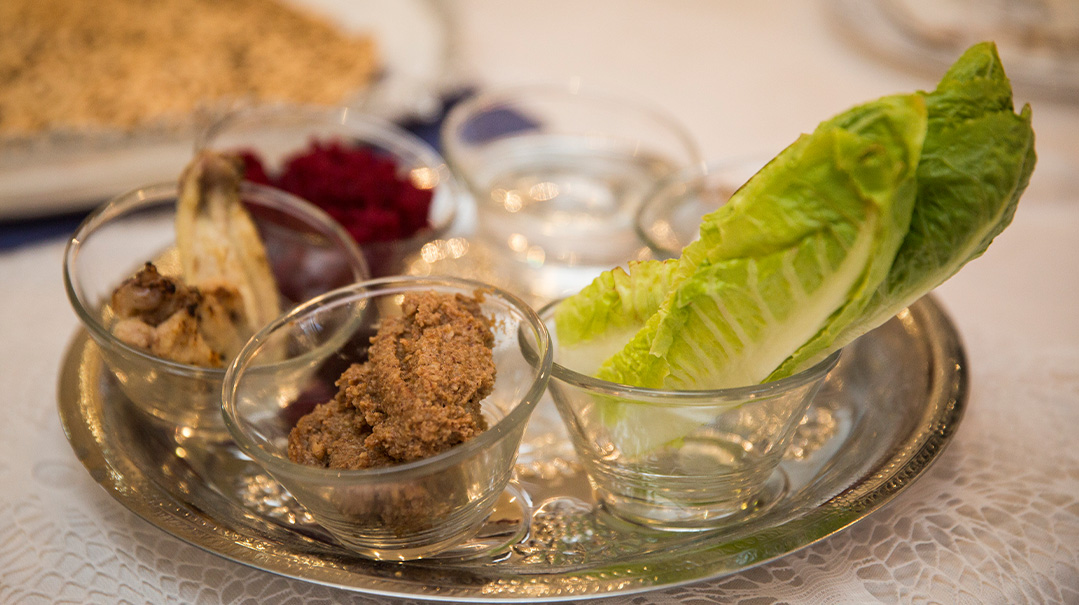The Greeneh and the Arbeter Ring
| February 7, 2023The greeneh were poor — but products of a noble past

Back then, when my parents and their contemporaries immigrated to the United States after World War II, the newcomers were called “the greeneh,” a Yiddish version of greenhorns, recent immigrants. They were survivors, mainly from Eastern Europe, from towns and villages whose development was years behind the West. At the war’s end, most of them had ended up in DP camps in Berlin, Germany, where they waited years for visas to the United States.
My parents were married in 1947 in a DP camp, and they and their extended families arrived on American shores in 1950. They were grateful to finally be in this new land and appreciative of the help their American brethren gave them, but it would take time for them to understand the culture and the nuances of American life.
The men worked in factories owned by shomrei Torah u'mitzvos. They were mostly located in the lofts of Williamsburg. A 12-hour day wasn’t unusual. Taking off on Shabbos and Yom Tov was no problem. Erev Yom Kippur and Erev Pesach were the only other “off days” when the factories were closed.
My father made neckties in a non-union shop that was open six days a week, and the employees were paid for piecework, not by the hour. My friend’s father worked in a union shop that was closed on Sunday, so he brought work home; it wasn’t possible to support a family on a five-day workweek salary. He made fabric-covered belts. I remember going with my friend to deliver the finished work to the boss’s house near Avenue C.
The summer I turned 14, I worked in a “piecework” factory. I learned a lot that summer. I could imagine the stress of a family being dependent on serious and in some cases backbreaking labor, and the feelings of the man who woke up each morning to face such a day.
In my father and his peers’ case, it was different. After their war experiences, their factory work was “child’s play.” They were only concerned that they earned enough to keep their families fed and warm. Coming late to work, or taking a day off, was unheard of; making a living was not to be taken lightly. I can’t remember my father or my friends’ fathers ever being sick and staying home.
My father’s morning started with going to the mikveh and davening Shacharis. He then crossed the bridge to Williamsburg, by bus or by thumb. After a long day and a late Maariv, my father z”l, tired as he was, would open a Chok L’Yisrael so that the day wouldn’t pass without him learning. Sometimes he would fall asleep with his head in his “chokil.” With time, parnassah became easier, and it was possible for him to spend more time in the beis medrash.
I could always pick my father out in a crowd; he walked faster than everyone else. He had a high level of energy and a “can do” attitude. He was a wise and kind man, with a wonderful sense of humor.
My father and his peers had a “Poilishe” attitude of “mach dich nisht narish” — a no nonsense approach that disdained silliness and sophistry. (Reb Leizer Frenkel z”l, our butcher, who davened with us in the Nahn N’ahntziger, was a “good Jew,” a philosopher and psychologist with a sense of humor. Someone complained to him that this was an olam sheker, a world of falsehood, to which he replied, “Ober keiner yukt zich nisht tzu gein tzum oilam haemes — but no one is rushing to go to the world of truth.” How is that for being grounded?) And yes, they were grateful for what they had, and found joy in being alive and part of it all.
We were seldom sick. My parents saved Eliyahu Hanavi’s cup of wine from the Seder — high alcohol Malaga — in a jar and stored it in the back of the refrigerator. When we didn’t feel well, we got a spoonful, along with the brachah, “Es zoll zein tzu refuah.” We rarely needed a second dose.
I remember getting a spoonful, and the whole family stood around to wish me a speedy recovery. I instantly felt better. Was it a placebo effect? Is believing you’re better a cure in itself? I don’t know. Brachos surely help. One time when my father got ill, probably with bronchitis or pneumonia, and not going to work wasn’t an option, my uncle came over to leig bahnkes — medical cupping.
My parents’ generation didn’t eat in restaurants or buy ready-made foods. They could only afford to buy basic food stuffs and made everything from scratch. The kosher food industry was still in its infancy and the greeneh, in addition to being frugal, were especially concerned about kashrus.
My brother, Hershel Gutwein z”l, was a precocious child. One very warm spring day, my mother went to pick him up from kindergarten at Yeshiva Chasam Sofer, located at that time on 4th street and Avenue C, across the street from Deutsch’s grocery. Hershel asked my mother to buy him a drink. She told him to wait until they got home, which was just a short distance away. “You know,” he said, “when Hagar’s son was thirsty, his mother sat and cried, and I am thirsty and here is a store with plenty of drinks and you won’t buy me one.”
There were no TVs in the home and no movie-going. Yiddish-language newspapers and the radio supplied information and entertainment. On Motzaei Shabbos, the radio, which was usually tuned in to the Yiddish station, WEVD, featured Rabbi Pinchos Teitz z”l, who learned a blatt Gemara live, and Rabbi Yossel Weinberg z”l, who taught Tanya. While I was too young to understand it all, the distinct cadence of their voices, the vocal nusach of their learning, was part of my childhood cocoon.
The sociologist Emile Durkheim claims that societal poverty, when everyone around is also poor, is salubrious and stabilizing. My friends and I didn’t feel poor. We all pretty much lived on the same standard. Plus, we were privy to some war stories of extraordinary suffering, and we appreciated that we, at least, lived in a time of peace and never went without food, adequate clothing, or shelter.
Much of our clothing and many household items were homemade. My friend Chana’s mother was a master seamstress; she made everything for her family, including suits and coats. One year, she was finishing the coats for the boys and didn’t get to complete Chana’s coat before the weather changed. Well, Chana wore two skirts, one on top of the other, and heavy sweaters to keep her warm until her coat was ready. When we got to school, she took off one skirt and stuffed it into her briefcase, swearing me to secrecy. I didn’t tell. I’ve lost touch with her, but I’m sure today she probably tells her grandchildren this secret with pride.
Before the war, many frum Jews had been reluctant to come to America for fear their children wouldn’t remain religious. As a result, it was the assimilated Jewish immigrants, who disdained their religious counterparts, who created the stereotypical image of the “shtetl Jew” synonymous with the play Fiddler on the Roof.
But actually, frum Jews throughout the ages didn’t have a tradition of theater, nor did they produce novels or works of fiction. The plethora of frum fiction for all ages is a recent phenomenon. The Yiddish theater was a product of the more secularized Jews of Eastern Europe and became popular in the late 19th century, reaching its zenith in the United States in the theaters on Second Avenue.
I remember as a young child in the late 50s, going with my mother a”h and her friends to the Arbeter Ring bazaars on Motzaei Shabbos in the winter. Der Arbeter Ring, The Workmen’s Circle, was a socialist organization that begat the newspaper The Forward. The outing was a welcome respite for my mother and the other women who made the trip from the Lillian Wald houses and the downtown neighborhoods. Everyone worked six days a week, and a long Motzaei Shabbos in the winter presented the perfect opportunity for taking a break.
Many of the women enjoyed the retail therapy. Then there was the metziah mayvenus, the art of seeing value in other people’s rejects and stretching a dollar a hundredfold. (Being a maven is a time-honored Jewish tradition, and in other circumstances created substantial wealth. Perhaps it was fostered by poverty and persecution. The Jew could be exiled, but his wisdom and knowledge was portable and couldn’t be taken from him.) My mother and her friends wouldn’t dream of paying retail prices; their hunting grounds were second-hand stores, homemade items, and Orchard Street “mit a damage.”
We owned a Singer sewing machine with a manual foot pedal. My mother made her clothing and mine. She also made the linens, drapes, and the slip cover for the high-riser that doubled as a couch. She would study the Arbeter Ring bazaar displays with an eye for fabric and sewing notions. I, after a quick look around at the displays, would watch the people who ran the bazaar and manned the cash registers. I didn’t feel any warmth emanating from them; there was no friendly interaction between them and us. I can just imagine what they saw when they looked at this group of poorly dressed women and children from the Lower East Side. The vendors at the bazaars saw us as the Jewish version of the “white man’s burden,” viewed us as brethren in need of education for entry into the 20th century.
Today, Der Arbeter Ring is almost extinct and those hardworking mothers with their head coverings and old country accents are now matriarchs of families with numerous descendants, who have very capably made their way in this country, and still revere their ancestors.
Emma Lazarus, in her poem on the Statue of Liberty, writes condescendingly (unintentionally I think) of the “huddled masses… the wretched refuse…” She and her family were Portuguese Jews, early settlers in the new world, and during the wave of Russian Jewish immigration in the 1880s, were there to welcome their brethren. I wonder how she and her contemporaries viewed the newcomers, with their lack of education and etiquette, and their burning desire to usher in a new world order via Socialism/Communism, or secular Zionism.
These zealots would go on to form organizations such as Der Arbeter Ring. I imagine the Lazarus family, and the newer but well-established German transplants, for all their philanthropy, probably couldn’t help but feel a little superior to these refugees, but in time, these newcomers’ energy would overpower their “aristocratic” predecessors.
In the 1950s, these old mostly Russian revolutionaries, now comfortably ensconced in New York, although sympathetic to the suffering of their greeneh brethren, took a dim view of their “old world” practices. The shtetl Jew was anathema to these “modern, forward- looking” organizers.
If they had looked deeper they would have seen that in fact, these Eastern Europeon survivors were products of a noble past, of places they called “de heim.” The homes they heartbreakingly remembered bore no resemblance to the Fiddler-style shtetl caricature. No, there was greatness in their past, exalted spirituality and sacrifice. You could see it in their faces, in their homes, and in their batei medrash. And interestingly enough, you can see it in Rembrandt’s paintings, in the faces of the Jews he drew, with visages that bespoke the “glory of Jerusalem past.”
De heim, oy de heim! To the survivors, home was not the projects or coops of the Lower East Side nor the tenements of Williamsburg. Their beloved homes were the cities, towns, and villages of Eastern Europe replete with cherished family, friends, and treasured memories long gone.
My parents and their peers had hardly any formal education, but they had life skills, survival skills. They were never young and never frivolous. They knew how to make decisions — even in matters of life and death — and how to take risks. But above all, they knew they owed their very existence to Divine intervention. The role they played in ensuring the eternity of Klal Yisrael is vastly out of proportion to their numbers. Theirs was a strong and brave generation.
Der Arbeter Ring, the educated, successful assimilated Jews, who pitied their “unsophisticated” brethren, had it all wrong. Their world would fade into obscurity. They were no match for the eternal values of the committed Jew, and the nachas generated by the families these refugees built.
It’s sobering to think that but for WW II, I would have raised my children in Poland. I can’t imagine my grandparents, the Gutwein and Merzel families, and their friends, would have come to the “treifeneh medineh” had there been no war. When Germany attacked Poland, they agonized so long, they barely made it in time across the border to atheist Russia, for what they believed would be only a temporary stopover, thinking they would return to Poland at the war’s end.
Had war not intervened, the huge wave of Communism would have engulfed Eastern Europe, the heart of Torah Jewry. The more Left Arbeter Ring types and their comrades would have destroyed the soul of the Jewish People. One only has to see the success Communism had in almost obliterating all knowledge and connection to Yiddishkeit in the former Soviet Union.
It took a famine to bring our father Yaakov and his family to Mitzrayim, and it took hard labor and cruel taskmasters to hasten our freedom from Egyptian slavery. We cannot fathom Hashem’s cheshbonos, but perhaps it took the destruction of a continent to transplant the center of Klal Yisrael, and we hope that those years of unspeakable horrors will accelerate the coming of Mashiach, may we merit to greet him speedily in our days.
(Originally featured in Family First, Issue 830)
Oops! We could not locate your form.







